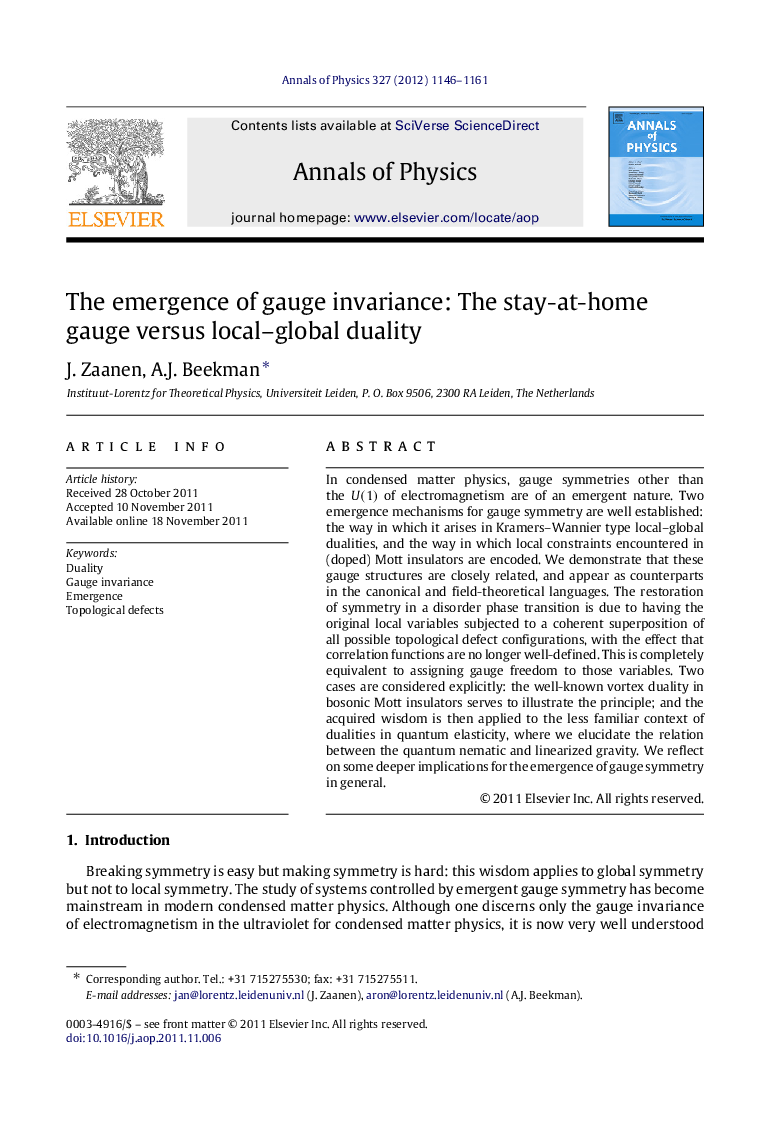| کد مقاله | کد نشریه | سال انتشار | مقاله انگلیسی | نسخه تمام متن |
|---|---|---|---|---|
| 1856674 | 1529892 | 2012 | 16 صفحه PDF | دانلود رایگان |

In condensed matter physics, gauge symmetries other than the U(1)U(1) of electromagnetism are of an emergent nature. Two emergence mechanisms for gauge symmetry are well established: the way in which it arises in Kramers–Wannier type local–global dualities, and the way in which local constraints encountered in (doped) Mott insulators are encoded. We demonstrate that these gauge structures are closely related, and appear as counterparts in the canonical and field-theoretical languages. The restoration of symmetry in a disorder phase transition is due to having the original local variables subjected to a coherent superposition of all possible topological defect configurations, with the effect that correlation functions are no longer well-defined. This is completely equivalent to assigning gauge freedom to those variables. Two cases are considered explicitly: the well-known vortex duality in bosonic Mott insulators serves to illustrate the principle; and the acquired wisdom is then applied to the less familiar context of dualities in quantum elasticity, where we elucidate the relation between the quantum nematic and linearized gravity. We reflect on some deeper implications for the emergence of gauge symmetry in general.
► Emergent gauge invariance comes in two opposite guises in condensed matter physics.
► Disordered states are superpositions of all topological defect configurations.
► This is equal to the emergent gauge invariance expressing a local conservation law.
► Quantum nematics of disordered translational order obey linearized gravity dynamics.
Journal: Annals of Physics - Volume 327, Issue 4, April 2012, Pages 1146–1161